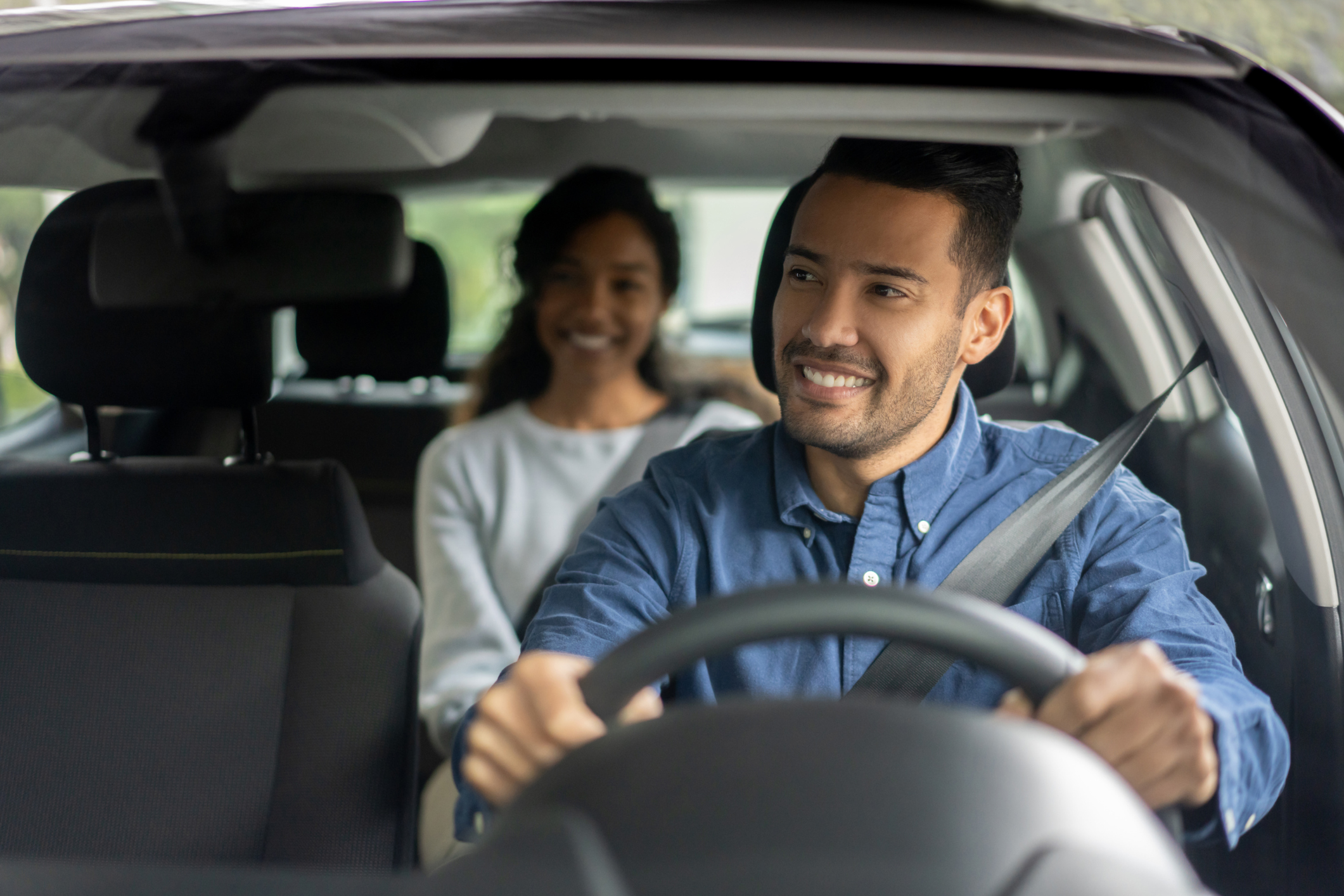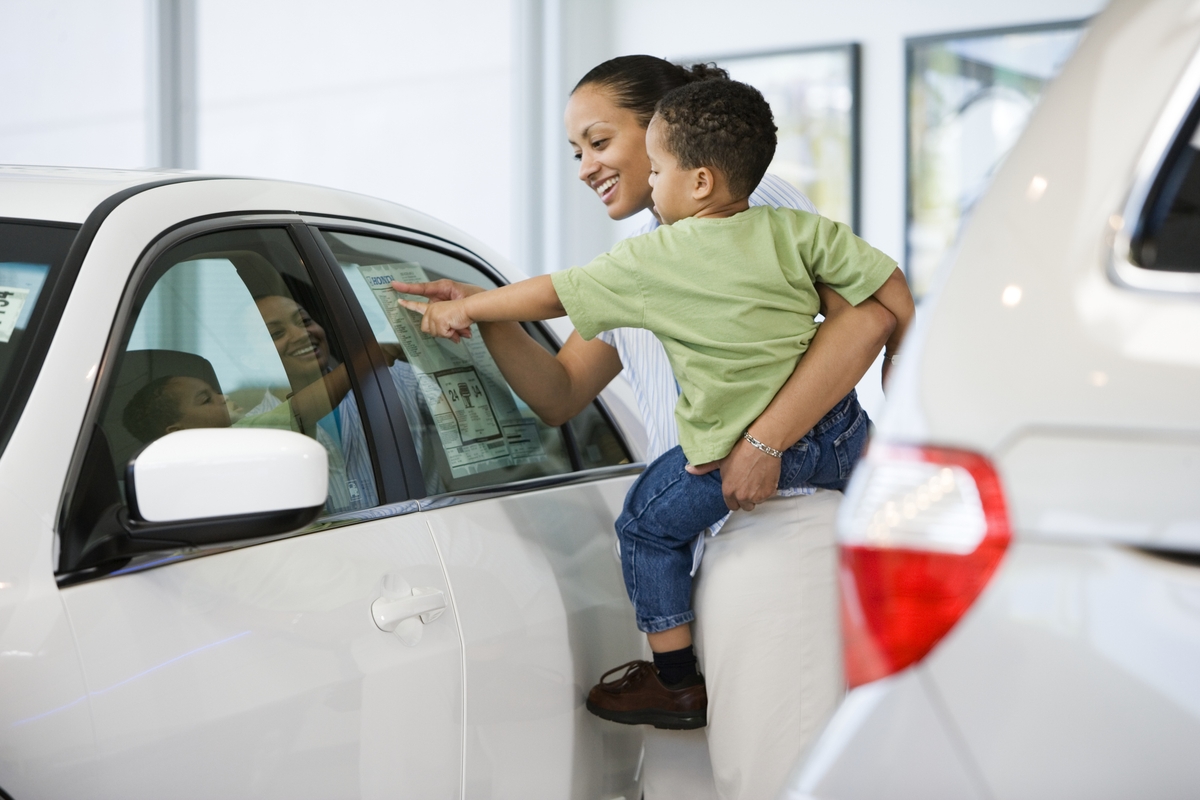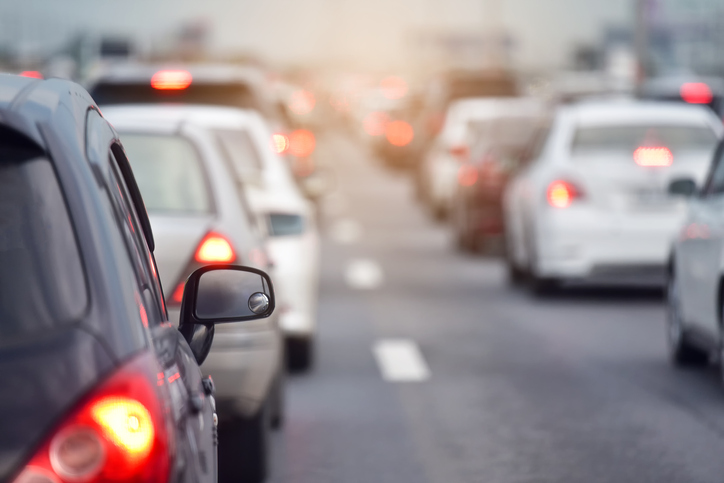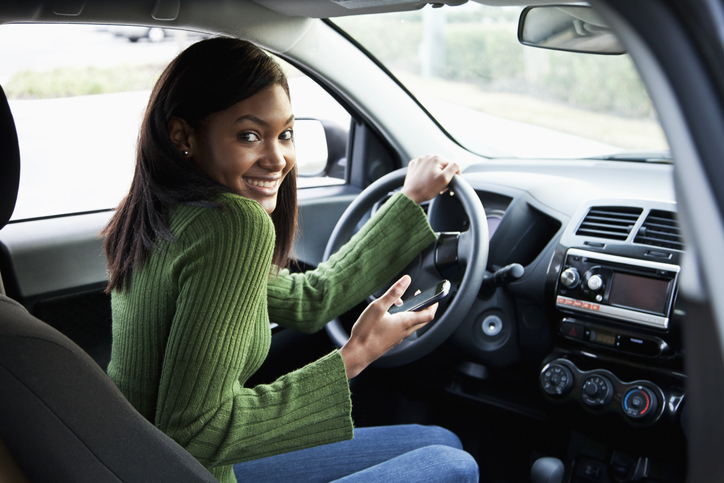Working for rideshare or delivery services is now a common way of making extra money. If you drive a car, you might have considered picking up a few riders via Lyft and Uber or food deliveries through platforms like DoorDash and Postmates. Before you do, however, you should understand how it will affect your car insurance.
What happens if you get into an accident while driving for ridesharing or delivery apps? If you assume that your existing auto insurance policy will cover it, that’s not a safe bet. Personal policies aren’t priced to account for the customers and additional mileage that come with rideshare driving. That means your current policy likely won’t cover any accidents that happen while you’re working — which could wind up costing you significantly.
Lyft and Uber do offer insurance, but it isn’t extensive enough to cover you in all cases. As a result, rideshare drivers may need to purchase additional insurance to supplement their personal policies.
What Is Rideshare Insurance?
Rideshare insurance covers drivers of transportation network companies like Uber or Lyft if they get into an accident while working. That means rideshare insurance replaces your personal auto insurance policy during the hours you’re driving for a TNC.
Why you need rideshare insurance
Drivers shouldn’t rely on their existing policies to cover an accident that occurs while they’re working for a TNC. Without rideshare insurance, drivers can be exposed to personal liability, according to attorney Thomas Brown, a shareholder and co-chair of the Rideshare Liability Practice Group at Marshall Dennehey Warner Coleman & Goggin in Orlando, Florida.
“Most personal auto policies contain an exclusion for vehicles that are being used for a business purpose such as providing rideshare services,” Brown says. “Further, an insurance carrier might cancel a personal auto policy if the insured vehicle is being used for business purposes.”
While Lyft and Uber do provide insurance for their drivers, their collision coverage (which pays to fix or replace your car if it’s damaged in an accident) and comprehensive coverage (which covers theft and incidents other than collisions) only apply once drivers have accepted a ride request. If you’re waiting for a ride request, ridesharing companies just cover you with liability insurance, which pays for the other driver’s medical bills and car damage when you’re at fault for an accident.
So, if you cause an accident when the ridesharing app is on and you’re available for a ride request, you’ll have to pay for your own car repairs out of pocket due to the gap in the collision coverage provided by Lyft and Uber. For many drivers, this could become a tremendous financial burden — and a big reason to purchase rideshare insurance.
Rideshare Insurance for Lyft and Uber Drivers: How It Works
Both Lyft and Uber offer coverage for their drivers, but it’s limited and contingent on your ride-booking app usage, or when the accident takes place.
“Most rideshare companies provide some level of bodily injury coverage, uninsured/underinsured motorist coverage, and coverage for property damage,” Brown says. “However, the availability and limits of coverage depend on several factors: (a) the rideshare platform being utilized, (b) the state in which the accident occurred, and (c) the policy period in which the accident occurred.”
Car insurance companies typically use the terms “periods” or “phases” to designate how coverage works when you’re working for a rideshare or delivery service. Here’s a look at what each phase means:
- Phase 0: Offline. When you aren’t using the Lyft or Uber apps, you’re covered by your personal auto insurance policy.
- Phase 1: Available for trips. When you’re logged in to the app and awaiting a new ride request, you’re usually no longer covered by your personal policy. Lyft and Uber provide liability insurance in this phase, but the limits are lower compared to what’s offered in subsequent phases.
- Phase 2: En route to pick up. When you’ve accepted a ride request and started driving to pick up the passenger, Lyft and Uber’s policies give you comprehensive, collision, and uninsured/underinsured motorist bodily injury insurance, in addition to liability coverage.
- Phase 3: Trip in progress. When you’re driving with passengers in the car, you get the same coverage as you did in phase 2 — liability, comprehensive, collision, and uninsured/underinsured motorist bodily injury coverage.
More specifically, car insurance for Uber drivers includes:
| Uber Insurance Coverage | |
|---|---|
| Phase 1: | Third-party liability insurance (if your personal auto coverage doesn’t apply): [table-list] $50,000 per person for bodily injury $100,000 per accident for bodily injury $25,000 per accident for property damage [/table-list] |
| Phases 2 and 3: | [table-list] $1 million in third-party liability insurance Uninsured/underinsured motorist bodily injury coverage (limits vary by state) Contingent collision and comprehensive insurance: [table-list-level-2] Up to the vehicle’s actual cash value with a $2,500 deductible Certain cars from Uber’s Vehicle Marketplace have a $1,000 deductible You must have a personal policy that includes collision and comprehensive coverage [/table-list-level-2] [/table-list] |
And here’s how Lyft’s insurance coverage works:
| Lyft Insurance Coverage | |
|---|---|
| Phase 1: | Third-party liability insurance (applies if your personal auto coverage isn’t in effect and may vary by state or city):$50,000 per person for bodily injury [table-list] $100,000 per accident for bodily injury $25,000 per accident for property damage [/table-list] |
| Phases 2 and 3: | [table-list] $1 million in third-party liability insurance (policy may vary by state or city) Uninsured/underinsured motorist bodily injury coverage (policy may vary depending on location) Contingent collision and comprehensive insurance: [table-list-level-2] Up to the vehicle’s actual cash value with a $2,500 deductible You must have a personal policy that includes collision and comprehensive coverage [/table-list-level-2] [/table-list] |
As you can see, the coverage gap in phase 1 poses the highest risk because your car could be damaged in an at-fault collision and Uber or Lyft wouldn’t cover it. Additionally, the liability insurance might not be enough to take care of the other driver’s repairs or medical bills.
Rideshare Insurance for Delivery Drivers: How It Works
Not all delivery platforms offer auto insurance to their drivers. Grubhub and Instacart are two examples of this. However, the companies that do provide insurance — like DoorDash and Postmates — follow a structure similar to that of ridesharing companies.
That is, your coverage depends on when the accident occurs:
- Phase 0: Offline. When you aren’t on any delivery apps, you’re covered by your personal auto insurance policy.
- Phase 1: Available for deliveries. When you’re logged in to a delivery app and waiting for a new request, you’re typically no longer covered by your personal policy. The coverage provided by delivery platforms in this phase is limited or nonexistent.
- Phase 2: En route to pick up. When you have accepted a request and are driving to pick up the items, you’re covered by the delivery company’s insurance policy — if it has one. This coverage is the most extensive in phases 2 and 3.
- Phase 3: Got the goods. When you’re driving with the delivery, you’re covered by the same insurance that you had in phase 2.
If you deliver via DoorDash, here’s what its insurance covers:
| DoorDash Insurance Coverage | |
|---|---|
| Phase 1: | No coverage provided |
| Phases 2 and 3: | [table-list] $1 million in third-party liability coverage (bodily injury and property damage), but it only kicks in if your personal policy doesn’t cover everything Occupational accident insurance: [table-list-level-2] Up to $1 million for medical expenses Up to $500 per week in disability payments Up to $150,000 in survivors payments for eligible dependents [/table-list-level-2] [/table-list] |
And this is what Postmates’ insurance includes:
| Postmates Insurance Coverage | |
|---|---|
| Phase 1: | No coverage provided |
| Phases 2 and 3: | [table-list] $1 million in third-party liability insurance (property damage and bodily injury), but it only takes effect if your personal policy isn’t enough to cover everything Injury protection insurance for California drivers: [table-list-level-2] Up to $1 million for accident medical expense 66% of average weekly earnings from TNCs for temporary total disability, subject to limits Up to $200,000 for accidental dismemberment Accidental death benefits and burial expenses [/table-list-level-2] Occupational accident insurance for drivers in other states: [table-list-level-2] Up to $1 million for accident medical expense Up to $500 per week in replacement earnings (50% of average weekly earnings) for temporary total disability, limited to two years; benefits reduced to one year for those age 70 and older Up to $500 per week in replacement earnings (50% of average weekly earnings) for continuous total disability, limited to five years, $100,000, or until age 70, whichever comes first; temporary total disability must be used up; you won’t receive these benefits if you’re injured after your Social Security retirement age Up to $100,000 for accidental death; benefits are reduced for those age 65 and older Up to $100,000 for survivors benefit, limited to $1,000 per month; benefits are reduced for those age 65 and older Up to $200,000 for accidental dismemberment, limited to $2,000 per month; benefits are reduced for those age 65 and older [/table-list-level-2] [/table-list] |
If you’re doing food delivery for Uber Eats, you receive the same insurance benefits as drivers working for the Uber ridesharing app.
Where To Buy Rideshare Insurance
If you’re looking for more coverage, rideshare insurance is offered by several major auto insurance companies (we break down their policies below). Coverage can take different forms depending on the insurer and where you live:
- Rideshare endorsement: This additional insurance is meant to fill coverage gaps and include situations that aren’t covered by your existing policy and TNCs.
- Personal insurance extension: This would extend your personal auto insurance policy to cover more phases, like when you’re available for rides and deliveries but haven’t accepted a request yet.
- Hybrid policy: Going with this option means your existing insurance would be replaced with a policy that covers both personal and business use of your vehicle.
Best Uber and Lyft car insurance companies
Here are some auto insurers that offer rideshare insurance for drivers, as well as some background information on how their policies work and where they’re available. Note that you’ll typically need to have an existing policy with an insurance company to purchase its rideshare coverage. You can check to see if your current insurer is on this list of the best rideshare insurance companies.
Allstate
Allstate’s Ride For Hire insurance aims to fill the coverage gaps when you’re logged in to a ridesharing app and waiting for a new request. Ride For Hire can also provide deductible gap coverage for damage to your car, up to $2,500, when you’re en route to pick up a passenger or on a trip.
Type: Rideshare endorsement
The fine print: Ride for Hire’s deductible gap coverage isn’t available in every state. However, Allstate also offers commercial insurance protection for Uber drivers during phases 1, 2, and 3 in 15 states: Alaska, Idaho, Illinois, Michigan, Minnesota, Montana, New Jersey, New Mexico, New York, Nevada, Oregon, Utah, Washington, Wisconsin and Wyoming.
American Family
The American Family Rideshare Endorsement is an add-on that extends the coverage from your personal car insurance policy. It covers you during phase 1, while you’re on the clock and waiting for requests to come in.
Type: Personal insurance extension
The fine print: American Family doesn’t offer its rideshare insurance in every state, so you need to check with one of the company’s agents to see if you’re eligible.
Erie
Erie’s rideshare coverage works by slapping a “business use” designation on top of your personal auto insurance policy. You’re covered before, during, and after your trip, but the rideshare coverage only kicks in once your other options — like Uber or Lyft’s insurance — have been exhausted. Keep in mind that you must purchase comprehensive and collision insurance through your personal policy to receive it as part of your rideshare coverage.
Type: Hybrid policy
The fine print: Erie Insurance Property & Casualty Company is only licensed in Washington, D.C., and 11 states: Illinois, Indiana, Kentucky, Maryland, New York, North Carolina, Pennsylvania, Tennessee, Virginia, West Virginia, and Wisconsin.
Farmers
Farmers Rideshare can be added to your existing policy with the company so that it extends to the time when you’re logged in to the app and waiting for your next ride or delivery.
Type: Personal insurance extension
The fine print: Farmers might not offer rideshare insurance in your state, so you should check with one of its agents to see if you’re eligible.
Geico
Rather than extending your personal coverage or dealing with add-ons, Geico Rideshare Insurance replaces your personal policy so that you’re covered by the same insurance regardless of whether you’re working.
Type: Hybrid policy
The fine print: Geico Rideshare Insurance is available in 40 states: Alabama, Arizona, Arkansas, California, Colorado, Connecticut, Delaware, Florida, Hawaii, Idaho, Illinois, Indiana, Iowa, Kansas, Louisiana, Maine, Maryland, Massachusetts, Minnesota, Mississippi, Missouri, Montana, Nebraska, New Hampshire, New Mexico, North Dakota, Ohio, Oklahoma, Oregon, Pennsylvania, Rhode Island, South Carolina, South Dakota, Tennessee, Vermont, Virginia, Washington, West Virginia, Wisconsin, and Wyoming.
Mercury
Mercury’s rideshare insurance helps fill liability gaps during phase 1, when you’re logged in to the app and ready for requests. In addition to covering any damage to the other car and resulting injuries, Mercury will arrange to have your car repaired at one of its facilities.
Type: Personal insurance extension
The fine print: Mercury’s rideshare insurance isn’t available in every state.
Progressive
Progressive offers two different types of rideshare coverage: an add-on to your personal auto insurance policy, or a commercial auto policy known as for-hire livery insurance. The for-hire livery policy is designed for taxi and luxury transportation services, so it tends to cost more. However, you’re covered for both personal and business use, and the coverage isn’t limited to ridesharing.
Types: Rideshare endorsement and hybrid policy
The fine print:
- Progressive’s rideshare endorsement is available in Washington, D.C., and 34 states: Alabama, Arizona, Arkansas, Colorado, Florida, Georgia, Idaho, Illinois, Indiana, Iowa, Kentucky, Louisiana, Maine, Massachusetts, Michigan, Minnesota, Mississippi, Missouri, Nebraska, New Mexico, North Dakota, Ohio, Oklahoma, Pennsylvania, Rhode Island, South Dakota, Tennessee, Texas, Utah, Virginia, Washington, West Virginia, Wisconsin, and Wyoming.
- The for-hire livery insurance is available in 38 states: Alabama, Arizona, Arkansas, Colorado, Delaware, Georgia, Idaho, Indiana, Iowa, Kansas, Kentucky, Louisiana, Maine, Maryland, Massachusetts, Mississippi, Missouri, Montana, Nebraska, New Hampshire, New Mexico, North Carolina, North Dakota, Ohio, Oklahoma, Oregon, Pennsylvania, Rhode Island, South Carolina, South Dakota, Tennessee, Texas, Utah, Vermont, Virginia, West Virginia, Wisconsin, and Wyoming.
State Farm
State Farm’s rideshare insurance extends your personal auto insurance policy to cover the time that you spend driving for a ridesharing company. When you’re online and waiting for a request, all coverages from your personal policy apply. However, when you’ve matched with a rider or transporting them, liability coverage is excluded because the TNC’s insurance should kick in.
Type: Personal insurance extension
The fine print: State Farm doesn’t offer rideshare insurance in every state, so you should reach out to a local agent and find out if it’s available where you live.
USAA
USAA’s Rideshare Gap Protection helps fill the coverage gaps during phase 1 so that you’re adequately insured when you’re logged in to a ridesharing app and available to take requests. It works by extending the coverage from your personal auto insurance policy.
Type: Personal insurance extension
The fine print: USAA’s rideshare insurance is available in Washington, D.C., and 37 states: Alabama, Arizona, Arkansas, California, Colorado, Connecticut, Delaware, Florida, Georgia, Idaho, Iowa, Illinois, Indiana, Kansas, Kentucky, Louisiana, Massachusetts, Maryland, Maine, Minnesota, Missouri, Mississippi, North Dakota, Nebraska, New Hampshire, New Jersey, Nevada, Ohio, Oklahoma, Tennessee, Texas, Utah, Vermont, Washington, West Virginia, Wisconsin, and Wyoming.
How Much Rideshare Insurance Costs
The cost of rideshare insurance depends on the type of coverage you buy and the limits on your policy, among other factors. Higher limits mean that your insurer will cover more in the event of an accident, but it also means that your auto insurance premium will likely be more expensive.
Here’s what you can expect to pay for rideshare insurance, according to three different companies:
| Auto Insurance Company | Rideshare Insurance Cost |
|---|---|
| Mercury | Minimum of 90 cents per day, though the final price depends on your premium |
| State Farm | Usually increases your current premium by 15% to 20%, depending on your policy and other factors |
| USAA | Minimum of $6 per month, but the cost varies by location and risk |
What Happens When Lyft, Uber, and Delivery Drivers Get Into an Accident?
If you have rideshare insurance and get into an accident while driving for a ride-hailing or delivery platform, the timing of the collision determines which insurance is used:
- Phase 0: Your personal policy covers you if the accident occurs when you’re offline.
- Phase 1: Rideshare insurance and the TNC’s limited policy cover you if you get into an accident while waiting for a request.
- Phase 2: The TNC’s policy typically covers you if the collision happens when you’re headed to pick up a passenger or delivery.
- Phase 3: The TNC’s policy typically covers you if you get into an accident during a ride or delivery.
How to file a claim with rideshare insurance
Filing a rideshare insurance claim involves many of the same steps that you would take to file a claim after a typical car accident. The difference is you also have to deal with the TNC that you were working for.
Here’s what you need to do to handle a rideshare accident and file an insurance claim:
- Check for injuries. Make sure you and your passengers are safe, and get away from the flow of traffic if possible. You should call 911 if the accident was serious.
- Document the damage and exchange insurance info. Take photos of the damage to each vehicle so that you can back up your insurance claim. Collect as much information as possible from the other driver, including their name, contact info, license, vehicle registration, insurance, and car make and model.
- Report the accident. Filing an accident report with the local police department will give you an official record of the collision, which can help if your account of the incident is contested or the other driver sues.
- Contact Lyft, Uber, or the delivery platform you were working for:
- Lyft has a customer service team for claims that’s available 24/7. You can use the button on this page to report an accident. Once you’ve alerted Lyft, there’s a post-collision inspection form on the same page where you can formally document any damage.
- Uber allows you to contact support through its “I was in an accident” feature, which you can find by going to “help” and then “trip issues and adjustments” within the app. You can also file a crash report on this page. Uber insurance requirements state that you must provide clear photos of all sides of your car, even if there’s no visible damage.
- DoorDash has an occupational accident insurance claims form with information on how to file a claim online. There’s also a dedicated hotline for DoorDash at 480-579-2405, available 24/7.
- Postmates has an email address that you can contact with relevant details if you get into an accident during phases 2 and 3.
- Contact your insurer. Reach out to your rideshare insurance company, if applicable, to file a claim. “A driver should promptly notify the insurance carrier of an accident as failure to do so could jeopardize coverage,” Brown says.
The Bottom Line on Rideshare Insurance
Driving for a ride-hailing or delivery platform means that you already pay extra for gas and car maintenance, so it may seem counterintuitive to spend even more money on additional insurance. However, even though you have a personal auto insurance policy, you won’t be covered during all phases of your trips or deliveries without rideshare insurance. It’s important to make sure that you have sufficient coverage while you’re working — the cost is worth it for the peace of mind.



